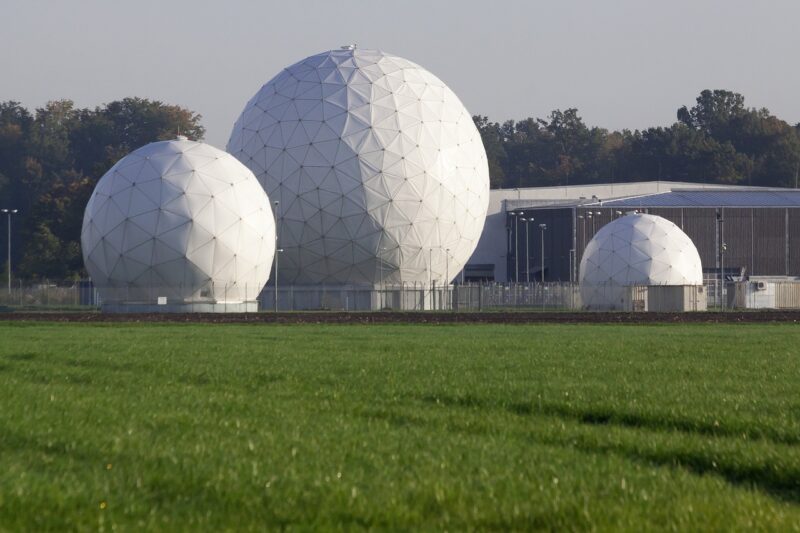Inside the Secret Service: The Men and Women Protecting America’s Leaders
November 15, 2024

When you think of the Secret Service, images of stern-faced agents in dark suits, sunglasses, and earpieces come to mind. They closely surround dignitaries, glancing around nervously as if anticipating an imminent threat. While this perception is partially correct, there is so much more to the Secret Service than just on-the-ground security. Established in 1865 and initially tasked with combating counterfeit currency, the United States Secret Service has evolved into a critical agency within the Department of Homeland Security, whose primary responsibility today is to protect the President, Vice President, their families, and visiting foreign dignitaries.
**1. A Brief History of the Secret Service**
The U.S. Secret Service was created in response to a serious counterfeiting problem that plagued the nation in the years following the Civil War. At that time, approximately one-third of all currency in circulation was counterfeit. The role of the Secret Service was vital to maintaining public confidence in the nation’s financial systems. It wasn’t until 1901, after the assassination of President William McKinley, that the agency began its protective mission. Today, the Secret Service balances two primary responsibilities: safeguarding the nation’s leaders and safeguarding the financial infrastructure.
**2. The Dual Mission**
The Secret Service operates under two main functions:
– **Protection**: The Secret Service is responsible for the protection of the President, Vice President, and their immediate families. They also provide protective services for visiting foreign dignitaries, major National Special Security Events, and special events such as presidential inaugurations.
– **Investigation**: Beyond protection, the Secret Service investigates crimes that involve counterfeiting and financial crimes, including credit card fraud, payment system fraud, and cybercrime. This dual mission requires agents to be highly skilled in both protective operations and investigative techniques.
**3. The Training of Secret Service Agents**
To become a Secret Service agent, candidates must undergo a rigorous selection process and extensive training. The process typically includes:
– **Selection**: Candidates must be U.S. citizens, possess a valid driver’s license, and either have a degree in criminal justice or a related field, or possess relevant law enforcement experience.
– **Training at the Federal Law Enforcement Training Center (FLETC)**: Accepted agents undergo training at FLETC, where they learn firearms proficiency, defensive tactics, emergency medical response, surveillance techniques, and protective operations.
– **Specialized Training**: After FLETC, agents receive specialized training in areas pertinent to their assignments, such as cyber investigations for investigative agents or diplomatic protection for those in field roles.
The preparation for agents is comprehensive, and ongoing training is a crucial component of their professional life, ensuring they can adapt to new threats and technological advancements.
**4. Protective Operations: A Day in the Life of a Secret Service Agent**
A typical day for a Secret Service agent can be unpredictable. Whether on a special detail for a high-profile event or ensuring the safety of the President during domestic travel, the responsibilities are immense. Key activities may include:
– **Advance Work**: Prior to an event, agents conduct site surveys to assess security vulnerabilities. They collaborate with local law enforcement, security personnel, and venue managers to develop comprehensive security plans.
– **Protection Operations**: The day of the event involves coordinating transport, crowd control, and surveillance to ensure the security perimeter is maintained.
– **Crisis Management**: In the event of a potential threat, agents must quickly assess the situation and implement emergency protocols to ensure the safety of the protectee.
Agents must be ready for anything, possessing the ability to think critically under pressure.
**5. The Tools of the Trade**
Secret Service agents leverage cutting-edge technology and traditional tools to fulfill their mission. Some of the critical tools include:
– **Communication Equipment**: Advanced radio systems and encrypted communication tools ensure safe coordination among agents, especially in high-stakes situations.
– **Surveillance Technologies**: Cameras, drones, and other monitoring systems play a vital role in intelligence gathering and threat detection operations.
– **Protective Gear**: Agents wear tactical gear that provides enhanced protection in potential combat situations while remaining discreet and professional. Additionally, the agency employs specialized vehicles fortified against ballistic threats to transport protectees safely.
**6. The Unique Challenges of Protection**
The role of a Secret Service agent is filled with unique challenges and high-stakes situations. These may include:
– **Public Interactions**: Agents often navigate the difficulties of maintaining a protective bubble while allowing dignitaries to engage with the public. They must step in discreetly to mitigate any threats while preserving the moment for the protectee.
– **Political Climate**: In a highly polarized political landscape, agents face the challenge of balancing intensive security measures with the need for transparency and public trust.
– **Global Events**: International travel for protectees means agents must adapt to different cultural expectations and potential security threats in foreign nations, often requiring close coordination with foreign security forces.
**7. Celebrating Diversity**
The Secret Service prides itself on its diverse workforce, valuing perspectives and experiences from various backgrounds. The agency actively seeks to diversify recruitment to reflect the populations of the communities they serve. Programs and partnerships with educational institutions aim to encourage underrepresented groups to pursue careers in federal law enforcement.
**8. The Future of the Secret Service**
As threats continue to evolve in the 21st century, the Secret Service is embracing innovation, integrating technology in their operational protocols, and engaging in continuous learning. As cyber threats become increasingly sophisticated, the agency is expanding its investigative side to combat fraud while maintaining its crucial protective mission. Moreover, the agency recognizes the need for mental health support for agents facing the stresses of their unique work environment.
**Conclusion**
The U.S. Secret Service represents the epitome of dedication and resilience, with its members committed to ensuring the safety of America’s leaders and the integrity of its financial systems. Behind the curtain of public perception lies an agency that continuously adapts, innovates, and evolves to respond to emerging challenges. Whether they are conducting investigations or securing events, the men and women of the Secret Service serve as a shield to protect democracy and the American way of life.
As we reflect on their contributions, it becomes increasingly clear that the Secret Service is not just a job; it is a calling—one that embodies a profound commitment to the nation and its service.







